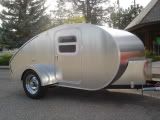 I can't see why it wouldn't work !! I can't buy it in gallon cans, so I was going to get the large 850 ml cartriges the spread evenly. Once its all covered I think a 1/16" notched trowel should give me enough of a thickness for any uneveness in the wood. Any input would be appreciated. Thanks, Dan
I can't see why it wouldn't work !! I can't buy it in gallon cans, so I was going to get the large 850 ml cartriges the spread evenly. Once its all covered I think a 1/16" notched trowel should give me enough of a thickness for any uneveness in the wood. Any input would be appreciated. Thanks, Dan
www.flickr.com/dantechfab
www.geocities.com/dantechfab





 Danny
Danny